For many car enthusiasts, owning a classic is a long-held ambition. However, you’ll need a solid understanding of this specialized area of the auto market in order to make the most of your purchase. For example, do you know the difference between classic vs. vintage cars and antique vehicles?
In this comprehensive guide, we’ll cover everything you need to know.
Key Takeaways
- There are many differences between classic, vintage and antique cards—beyond just age. We cover them all below.
- Age, rarity and design are the three basic areas that influence a car’s collectability.
- The Hartford’s Nutmeg Agency offers comprehensive antique and classic car insurance at a price that fits your budget.
Main Differences Between Vintage vs. Classic vs. Antique Cars
If you have a real affection for cars, owning something older—with a little more character—is one of those life goals that you just must tick off the bucket list.
But what should you buy?
Before you commit, it’s worth asking yourself how far back in automotive history you want to go. The era you choose will affect not only style and performance but also cost, upkeep and even how often you can drive your vehicle.
The difference between classic vs. vintage cars and antiques vs. classic cars isn’t just age. In some states, classification can impact registration fees, annual mileage, auto insurance requirements and more. So, check the state laws that will apply to you, especially if you plan on crossing state lines to take part in classic car club events, parades or restoration projects.
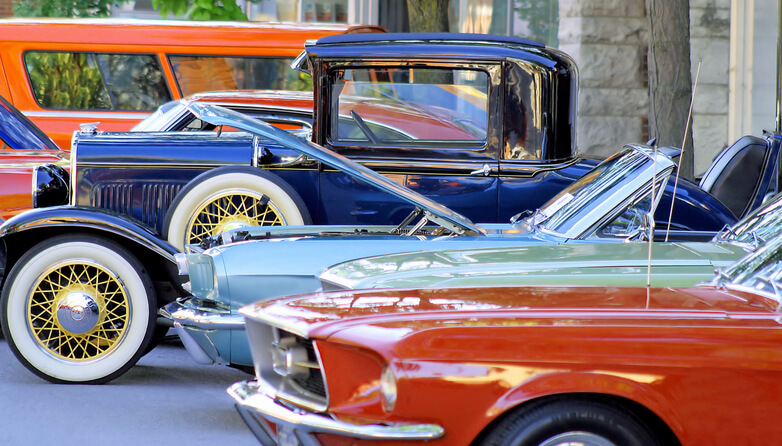
Vehicle Age and Manufacturing Era
Vintage vehicles are generally cars manufactured between 1919 and 1930, representing a unique post–World War I era in the motoring world when engineering and design rapidly evolved. Generally speaking, antiques are defined as being at least 45 years old, so it’s a rolling age, not a fixed era. Meanwhile, classiccars are usually 20-40 years old, which now includes cars from the early 2000s.
Historic Registration and State Classification
Whether a vehicle qualifies as vintage, antique or classic affects how it’s titled, registered and even how it can be driven. For instance, many states have specific guidelines for vintage status, often requiring cars to maintain their original design and be used for exhibitions and parades only, rather than as modern daily drivers.
Registration rules also differ for antique and vintage vs. classic cars. For instance, a vintage vehicle might be eligible for “Horseless Carriage” plates, while an antique vehicle could qualify for “Antique” or “Historic” plates. A classic car might get “Collector” or “Classic Car” plates.
Market Value and Rarity Influence
Whether a vehicle is considered classic, vintage or antique can have a significant impact on price and desirability in the collector car market. Rare vintage models often command the highest values, especially if they’re in a well-preserved condition.
Ultimately, value comes down to rarity, place of origin and demand, not just the category.
While age range and condition are good general indicators, there’s no hard-and-fast rule for determining value, as prices vary greatly depending on the make, condition and demand within classic car clubs and auction houses.
Here’s a side-by-side overview of the key differences between vintage, antique and classic cars:
| Criteria | Vintage Car | Antique Car | Classic Car |
| Year of Manufacture | 1919–1930 (post–WWI through pre-Depression era) | Typically 45+ years old | 20-25+ years old |
| Restoration Criteria | Must be restored to original design specifications with strict adherence to period-correct methods and materials, or be a well-preserved “survivor.” | Should be restored to original specifications or preserved as a survivor. Minor allowances may be made for safety or practicality in later-era antiques. | May be restored to original condition or tastefully modified, depending on category and judging standards. |
| Historic License Plate Eligibility | Often qualifies for “Vintage Vehicle” or “Historic Vehicle” plates | Commonly eligible for “Antique” or “Historic” plates | Frequently eligible for “Classic Car” or “Collector” plates |
| Typical Historic Plate Labels | Vintage Vehicle, Horseless Carriage | Antique Plate, Historic Vehicle Plate | Classic Car Plate, Collector Car Plate |
| Registration Benefits | Limited-use recognition with reduced fees in some states. Typically used for pleasure driving, car shows or exhibitions. | Similar limited-use recognition to vintage cars. Some states allow pleasure drives or club events only. | Varies by state. May have reduced fees, mileage limits or club-related perks. |
| Market Price Influence | Very high for rare, well-preserved models. | Moderate to high value depending on rarity, provenance and condition. | Price ranges widely, influenced by make, demand, quality of restorations and emotional appeal. |
| Rarity and Availability | Often rare, especially in original, unrestored condition. Parts and expert mechanics can be difficult to source. | Increasingly rare, particularly pre–WW II models. Limited availability of parts and specialists. | Includes older cars from the ‘80s and ‘90s. More widely available. Parts are easier to find for classic cars vs. vintage cars. |
| Insurance Consideration | Specialty collector insurance is often required. | Qualifies for antique vehicle insurance with specialty carriers. | Often requires classic car insurance or collectible coverage with usage limits. |
Modified Car Classifications
Not every collectible fits neatly into traditional definitions for classic vs. vintage cars. That’s because some owners customize their vehicles for better performance, comfort or style, creating modified cars that fall into one of these categories:
- Street Rods: Typically based on pre-1949 models, these cars often feature extensive custom work, like engine swaps and updated suspension. The only prerequisite is that they maintain the recognizable body style of their era.
- Resto Mods: Short for “restoration and modification,” these combine a period-correct exterior with modern mechanicals such as fuel-injected engines, disc brakes and upgraded electronics. A well-executed resto mod can be a great car for regular use while still retaining its original charm.
While purists may see builds that blend history with modern upgrades as straying from authenticity, others view them as a way to keep vintage and classic cars on the road and enjoyable for everyday driving.
Types of Cars: Classic vs. Antique vs. Vintage
Definitions based on age are important, but it can also be helpful to look at real-world examples to gain a deeper understanding of classification criteria and determine when a vehicle might transition between categories.
What Are Classic Cars?
Classic cars are typically between 20 and 40 years old, although the precise definition often varies by state. Generally speaking, vehicles must retain their original design to be considered a true classic. Vehicles with extensive alterations fall into the category of modified cars.
What Kinds of Cars Are Considered Classic?
As time marches on, the window that defines a classic shifts, making cars of a certain age ineligible for the status, while at the same time making others newly eligible. For example, while many cars from the 1960s were previously stone-cold classics, now the category also includes vehicles from the ’80s and ’90s. And some of those classics from the ’60s are already considered vintage.
Classic vehicles often appeal to younger collectors drawn to the cars they admired growing up. Examples of popular classic cars include the Chevrolet Camaro (second to fourth generation), BMW M3 (E30, E36, E46), Ferrari Testarossa and the Honda S2000.

These models offer a blend of nostalgia and usability, making them popular among automotive industry enthusiasts who prioritize style, performance and relatively easy access to parts.
What Makes a Car an Antique?
According to the official definition used by the Antique Automobile Club of America, an antique car is one that is over 45 years old. However, there are some exceptions based on varying state laws. For example, the state of Michigan defines an antique car as one that was manufactured at least 26 years ago and is “used as a collector’s item.”
The bottom line here? Ultimately, there are numerous factors that help appraisers decide whether a vehicle is considered an antique.
What Kinds of Cars Are Considered Antique?
Many of the kinds of cars that would previously have been considered classics—like those from the automotive golden eras of the 1960s and ‘70s—are now old enough to be considered antiques. Like classic cars, antique vehicles should be as close to their original specification as possible, although modern spare parts are often permissible due to the difficulty of obtaining rare original parts.
Examples of antique cars include:
- Ford Mustang Fastback
- BMW 507
- Toyota 2000GT
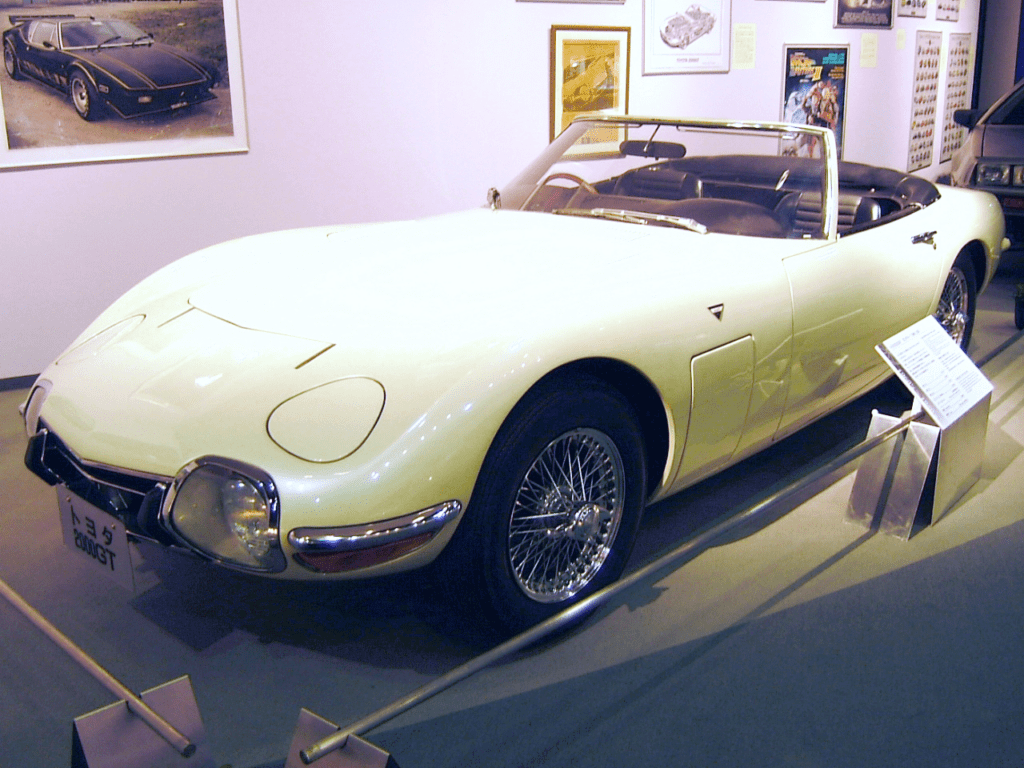
Antiques represent a higher tier of preservation and historical significance, often valued for their rarity, craftsmanship and place in cultural memory.
When Does a Car Become Vintage?
As with classic and antique vehicles, what constitutes a vintage vs. classic car depends on who’s defining it. However, most clubs and collectors agree that a vintage car is from the early days of motoring, specifically vehicles manufactured between 1919 and 1930. This makes the classification for vintage cars a fixed era, unlike antiques and classics.
It’s important to note that the Brass Era (roughly 1896–1915), with its early pioneer cars featuring brass fittings, is generally treated as a separate category and not included within “vintage.” Modified vehicles like hot rods may borrow vintage styling, but true vintage status applies only to original or authentically restored examples from that 1919–1930 window.
What Kinds of Cars Are Considered Vintage?
Vintage cars reflect a pioneering age of motoring, driven forward—quite literally—by leading manufacturers like Ford, General Motors and Chrysler. Their vehicles set benchmarks in engineering and design that still influence the automotive industry today.
Prominent examples of vintage cars include the Ford Model T and Model A or the Cadillac V-16.
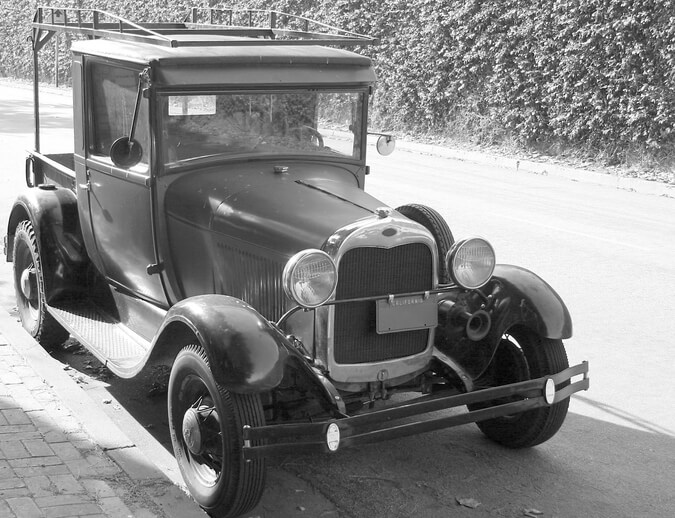
While fewer people drive these vintage models regularly, such cars are far from being old junk. For collectors, they serve as centerpieces offering a tangible link back to the earliest days of motoring, preserving a legacy of innovation and craftsmanship.
What Makes a Car Collectible?
There are numerous factors that go into deciding what makes a car collectible, many of which are purely emotional or nostalgic.
However, there are three basic areas that influence a car’s collectability:
- Age: The older a car is, the fewer there are likely to be around, especially ones in full working order. But the car’s historical significance and its place in automotive culture could raise its collectability. A car might have heralded the dawn of a new design language or a new technology that will pique the interest of classic car fans.
- Rarity: Special-edition or limited-run models are clearly desirable, because ownership bestows a sense of exclusivity – the knowledge that you’re a member of a very small club. Sports car and supercar manufacturers are particularly keen on producing small batches of cars with higher performance. These cars are very sought-after right from their initial launch, something that doesn’t erode as they get older.
- Design: We all like to own beautiful things, and cars are no different. A well-designed and aesthetically attractive automobile, such as the Lamborghini Miura or Jaguar E-Type, will always have collectors queuing up to buy into ownership. So demand will always be high.
Ultimately, a car’s collectability hinges on how powerfully it stands out to serious buyers when all these factors come into play.
Insure Your Antique, Vintage and Classic Cars With The Hartford
Whether you own a rare vintage vehicle, a well-preserved antique or a cherished classic car, having the proper insurance is essential. In the past, many owners simply added these vehicles to their standard auto policy, often paying higher premiums without getting coverage tailored to their needs. But today, you have better options.
The Hartford’s Nutmeg Agency specializes in connecting you with the best carriers to ensure comprehensive antique and classic car insurance at a price that fits your budget. Not to mention, your vehicle may still qualify for many of the same discounts as newer cars, too.
You’ve put time, money and passion into your car. Now it’s time to make sure it’s fully protected. Contact us today to explore your options for comprehensive coverage that preserves both your vehicle’s value and your peace of mind.
FAQ On Vintage vs. Classic vs. Antique Car Classifications
What Age Is Considered a Classic Car?
Under the loosest interpretation, a classic car is 20–40 years old. Classics were generally assumed to have been manufactured pre-2000, but classics now include cars from the early 2000s, too. Still, exact classifications can vary by state and insurance provider.
When Is a Vehicle Considered an Antique?
In most states, a vehicle is considered an antique if it’s at least 45 years old and has been maintained close to its original condition. That said, some states use different cutoffs, so always check local regulations.
What Makes a Car a Classic vs. Just an Old Car?
A classic car is one that meets age criteria and has historical interest, collectible value or design significance. An old car without these qualities is generally valued only for transportation.
Is Classic Car Insurance Cheaper?
Rates depend on factors like usage, mileage limits and agreed value. Classic car insurance can be cheaper than standard auto coverage, because these vehicles are typically driven less and maintained in excellent condition.


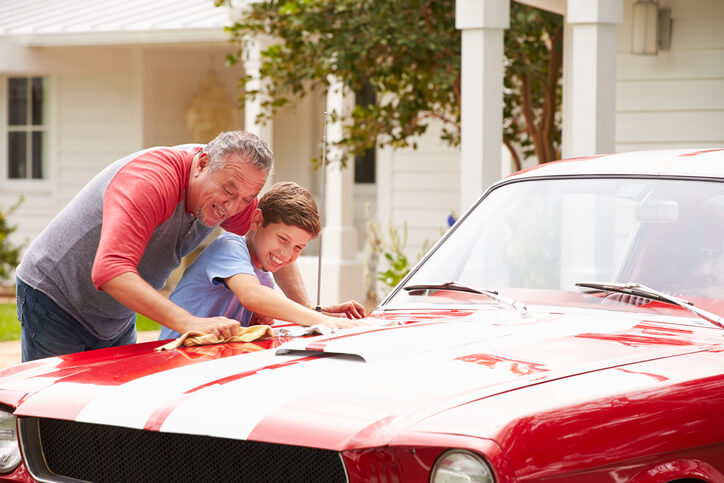


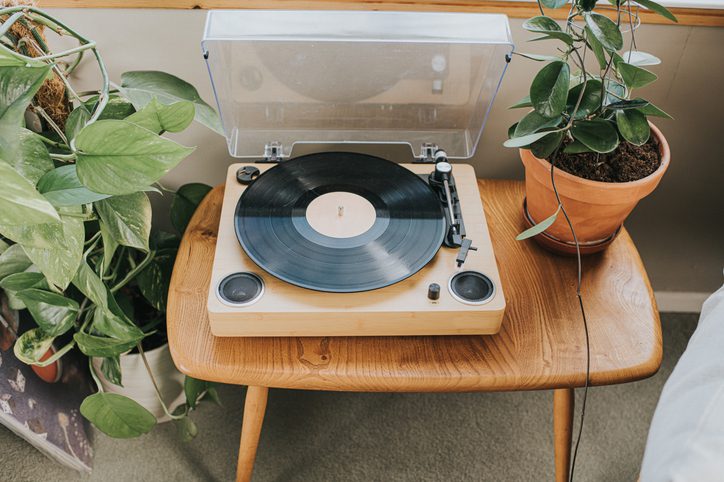

My family has 1956 Fairlane with Thunderbird engine. It has been in garage since 1972. It has 38K miles and all original. It is 4-Door. I have been told 4-Door is like 30% of value of 2-Door. Someone threw out value after getting new tires and basic engine prep to get it running that value is 13K to 18K. The car even had plastic covering seats. That person said if it was 2 door that it would have value about 50K in pristine condition.
I was about 23 when I first saw a 1939 Packard. Fell in love with it! Maybe someday…
I currently have a 1996 GMC Sierra 3/4 ton pickup. Great truck!
I’ve had four 70’s Corvettes, first one a 68 BB, the other three owned in past 20 years, with one from past 10 years being my favorite (won over 25 trophies). Now that I’m 70, I’m thinking of either getting one like my very first car, a 1957 Olds (yes I had a 69 Camaro too) or a 1952 car (year I was born). I’ve been hankering for a old car.
I drive a 92 and 91 Mercedes they drive well and are kept in excellent condition what are they considered?
1990-1996 Mazda Miata MX-5 appear that they are becoming a collectible car.
To me, “classic” is a meaningless term. It means whatever you want it to mean.
“Collectible” is any vehicle where there is substantial interest where owners buy, maintain and restore vehicles or original condition or near-original condition. These vehicles are supported by owners groups, annual meetings, newsletters, etc.
“Antique” is any vehicle manufactured prior to WWII. It includes “brass era” vehicles as well as mainstream vehicles manufactured prior to 1945.
“Vintage” is a descriptive term that could be applied to any of the above. It means the vehicle is substantially equipped the same way it left the factory, with its original engine, paint, interior trim, etc., and has not been modified or “upgraded” in any way. By definition, this would exclude custom street rods, vehicles with swapped engines, frames and suspensions replaced, etc.
I guess I would be considered a true “car guy”. I owned over 40 collector cars., the oldest was a 1911 EMF (Studebaker), newest was two 62 Corvettes. We currently have 3 Model A Fords, 31 Cabriolet, 30 PU, 29 4DR, plus a 35 Ford Cp, 55 Chevy Bel Air & a 55 T-Bird. I got my 1st Model A Ford when I was 15 and have owned 18 of them over the years. It’s a great hobby & I feel very lucky to have been able to do most of the work on them myself.
I have owned a 1956 ford 100 pickup for over 50 years and my insurance company has never offered antiue or classic insurance except for state farm insurance. I drive it maybe 5 days a year for show & shines. The Ford is presently not insured to drive on the road. Too expensive to just drive for a few days of the year. i just keep polishing it and start it up once a week. I currently have the Hartford insurance and sold my Mustang cobra jet convertable.
I have a collection of British Classic Cars. A 1959 Triumph TR3, 1960 Austin Healey 3000, 1962 Austin Healey 3000 Mk11, 1973 MGB and a 1976 Triumph TR6. My wife is always complaining to sell something!!!
Re Classic cars: Ken Purdy would’ve violently disagreed with your definition. Think Pierce-Arrow, Peerless, Deusenberg etc. Of course times change.
I got a 1989 chev 1500 silverado. All orginal. I wood like information on bestest way to insure me truck Thanks
Joseph – Thanks for reading Extra Mile! For more information on classic car insurance, you can contact one of our specialists by calling 800-555-2510.
We have a 1931 Ford pickup and a 72 Nova. My wife want a 1960 Red Corvette.
I drive a 1969 vw bus everyday
It’s a lot of fun and at least once a week some one wants to buy it. I am 70+ years old. Never grew up.
I just bought a 1975 Cadillac. It is in excellent condition. And at a very reasonable cost.
Properly aligned wheels ensure your car handles properly, and therefore increases the life of your tyres and increases your safety.
Properly aligned wheels ensure your car handles properly, and therefore increases the life of your tyres and increases your safety.
I have a 1941 Buick Special 4 door that is low mileage. At 80 years old, it’s in great condition.
My little mini collection cover a couple of categories. All are special to me. My 1961 Chevy Impala, bubbletop, is the jewel in the Crown. I also enjoy, my 2002, Z28 Camaro convertible, and my 2002 Chevy Monte Carlo SS. All are very low mileage, originally equipped cars. The Z28 has 39k miles, the Monte SS has 14k miles, and has been in the family since new. The Impala at 61 yrs. Of age, has clocked barely 23k miles, and Carrie’s it’s original Roman Red paint, and interior proudly. It also has it’s original drivetrain. 283 V8 withfactory 4 bbl., dual exhaust, and Powerglide auto trans. The pair of 2002’s aren’t quite what you’d call classic, but at 19 yrs. Of age, soon will be. GREAT ARTICLE!
I have been driving my 1998 Nissan Sentra for 17 years. It runs good it has just 127,000 miles on it and I just put new tires on it. Is it just old, classic, or ?
I loved your blog and thanks for publishing this!! I am really happy to come across this exceptionally well written content regarding classic cars vs vintage cars . Thanks for sharing and look for more in future!!
This is really appreciated that you have presented this data over here, I love all the information shared. It will be very helpful to understand the content on classic cars vs vintage cars . Indeed a great post to share!! Loved it…
I love this blog, and great that you have shared these about classic cars vs vintage cars. I enjoy reading this blog; hope to learn more from your blog in future. Great points!! I love this blog; please keep updated us with such information.
I purchase a beautiful 1972 Cadillac Coupe DeVille in 2013, gold outside with a white vinyl top gold leather inside, beautiful automobile has approximately 60,200 miles on the clock, runs and drives beautiful. I feel very proud can own a piece of Detroit history. Thanks Big Joe in Longview Texas
I’ve got a classic car for sale Toyota Corolla Kudos automatic1993 with mileage 46000 mile “very good condition “
I own a 1999 Mercedes Benz 320 Station Wagon all wheel drive. Kept it serviced by Mercedes Benz for 20 years. Is it a classic yet?
Basically, you have an older used card. Stations wagons in general are not considered classic cars; some are collectible, such as the 1950s Chevy Nomads. If you are considering selling it at some point, my recommendation would be to join and reach out to MB enthusiast clubs. Your station wagon might be the ideal vehicle for someone towing a valuable 300SL to a show.
Car is now 23 yeArs old